When Dolby Atmos was first introduced for the home, the only way to get it was in an expensive component based system. But now Dolby Atmos surround sound systems come in all shapes, sizes, and price points.
Buyers who have the space and budget, can of course opt for a high-end setup with floor-standing front speakers, genuine in-ceiling speakers, a 12-inch powered subwoofer (or two), and a beefy AV receiver to power and process it all. But what if you don't have a big enough room or wallet for such a sizeable investment? Can you still enjoy a solid Dolby Atmos experience without breaking the bank or surrendering your entire living room?
Well, that's where the VIZIO SB36514-G6 5.1.4 Home Theater Sound System comes in. Resting comfortably between the company's cheaper 36-inch 5.1.2 model and its more expensive 46-inch 5.1.4 model, this 36-inch 5.1.4 channel system offers a complete Atmos solution without sacrificing the space-saving benefits, relative affordability ($699), and overall simplicity that customers come to expect from a typical soundbar package.
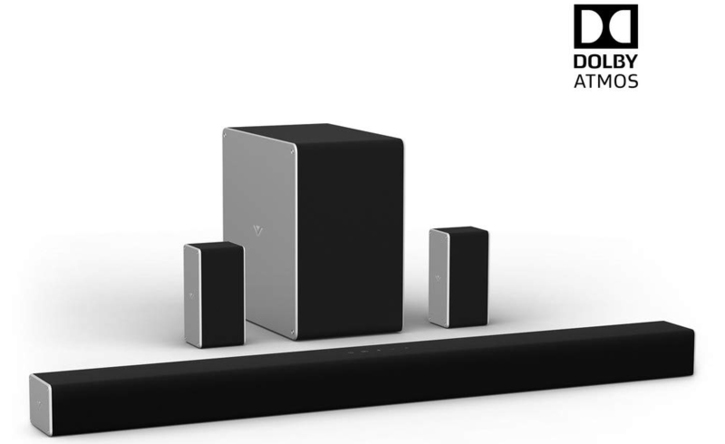
The SB36514-G6 consists of a 36-inch 3-channel sound bar unit with left, center, and right channels, as well as 2 integrated up-firing drivers designed to simulate overhead speakers. A wireless 6-inch subwoofer and two separate rear satellite speakers each with their own integrated up-firing drivers are also included. In addition, a compact click-button remote with a simple black and white LCD text screen rounds out the package. Though perfectly functional, the remote's screen isn't backlit, which makes use in a dark home theater setting a bit difficult.
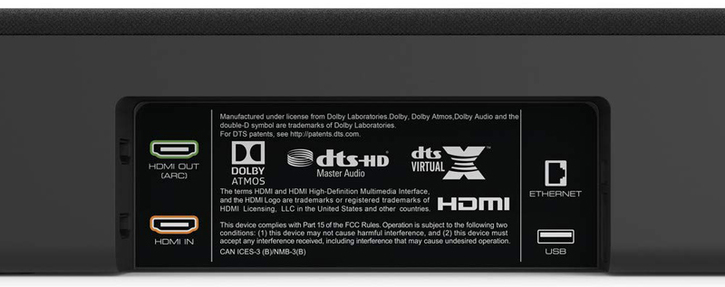
When it comes to wired connection options, the soundbar includes an HDMI ARC output for connecting the device to a TV, along with an HDMI input with full 4K HDR/Dolby Vision pass-through for connecting an additional component, like a Blu-ray player or streaming set top box. Optical and analog audio connections are included as well, though it's important to note that these ports are not able to carry Dolby Atmos audio, due to limitations in the S/PDIF digital specs. If you want Dolby Atmos, you'll need to stick with HDMI. Wireless Bluetooth and 802.11n Wi-Fi connectivity with Chromecast built-in are also featured, enabling music streaming from a variety of mobile devices and apps.
Supported audio formats over HDMI include Dolby Atmos, Dolby TrueHD, Dolby Digital Plus, DTS-HD Master Audio, and DTS. Sadly, however, the soundbar lacks DTS:X decoding capabilities (DTS:X tracks simply come through as DTS-HD Master Audio).
The Setup
Like most modern soundbar systems, initial setup is pretty simple and straightforward. Users simply have to plug in the soundbar and subwoofer's power cables to an outlet, and then connect the rear satellite speakers to the subwoofer via the included audio cables. Once the soundbar and subwoofer are turned on, the two components will automatically pair with one another.
After that, you just have to connect your desired sources to the appropriate inputs and outputs. For review purposes, I primarily tested the SB36514-G6 via HDMI ARC connection to a TCL 6-Series 4K HDR TV. I also connected an LG UP970 4K Ultra HD Blu-ray player directly to the soundbar's HDMI input.
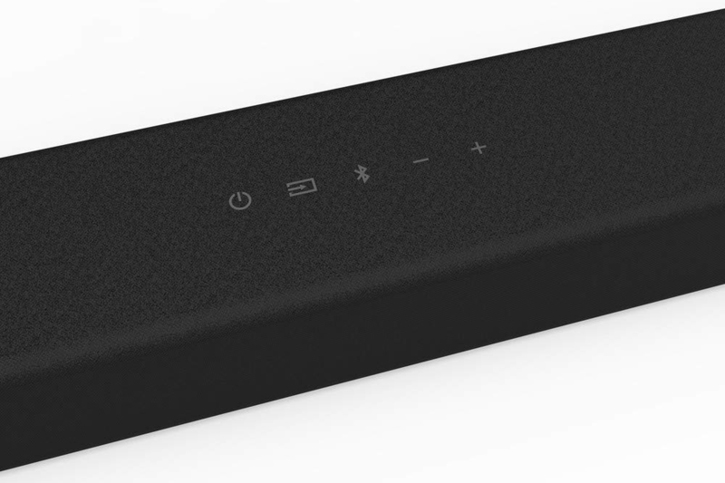
Beyond wired playback, users can opt to configure the soundbar's wireless capabilities via the VIZIO SmartCast app for iOS or Android devices. After discovering the soundbar, the app can be used to pair the unit with a Wi-Fi internet connection, allowing users to cast music from Chromecast-enabled streaming services like Spotify, Google Play Music, Pandora, iHeartRadio, and more.
The SmartCast app itself features integrated playback for iHeartRadio stations, though most other services, like Spotify, need to be opened separately. A helpful selection of audio settings can also be accessed via the app (or the included remote), giving customers the ability to tweak various settings like bass, treble, balance, and volume, including individual adjustments for center, surround, subwoofer, and height levels.
Three EQ modes -- Direct, Movie, and Music -- are selectable as well. Direct mode plays back Dolby Atmos, surround sound, and stereo soundtracks in their native format (no up-mixing). Meanwhile, Movie and Music modes enable up-mixing to utilize all of the system's 5.1.4 channels for all content.
As a whole, the SmartCast app functioned reasonably well during setup and testing throughout my evaluation, but I did run into some occasional lag when adjusting settings. Unfortunately, the app and other Chromecast services also stopped recognizing the soundbar a few times despite all of my components being connected to the same network. Thankfully, restarting my phone, router, or the soundbar itself seemed to correct this issue when it occurred.
Listening
To test out the SB36514's immersive audio performance I played a variety of Blu-ray discs, 4K Ultra HD Blu-ray discs, and VUDU streaming titles with Dolby Atmos soundtracks, along with a few titles with DTS-HD MA or standard Dolby mixes.
One of the most telling samples actually came from a simple 5.1.4 test tone clip included on one of Dolby's demo discs. When playing back the front height and rear height channels, the up-firing drivers did a very convincing job of bouncing audio off of my ceiling, truly making it sound as if the tones were coming from specific spots above me. Other Dolby demo content, including a clip of a rainstorm, offered similarly engaging height presence, extending the soundscape far above the listening position.
Thankfully, overhead performance was equally impressive when watching actual movies, creating an immersive, hemispherical soundfield. Whizzing helicopter blades seamlessly moved from the front heights to the back heights during action scenes in "Hobbs & Shaw," revealing the benefits of a true 5.1.4 configuration. Flapping elephant ears in Tim Burton's live-action "Dumbo" also made for a great showcase of the up-firing drivers, bringing an extra sense of height to the track. A couple of effects, like an overhead computer voice in "Jupiter Ascending," were decidedly less convincing, but in general, the elevation tech worked well during my testing.
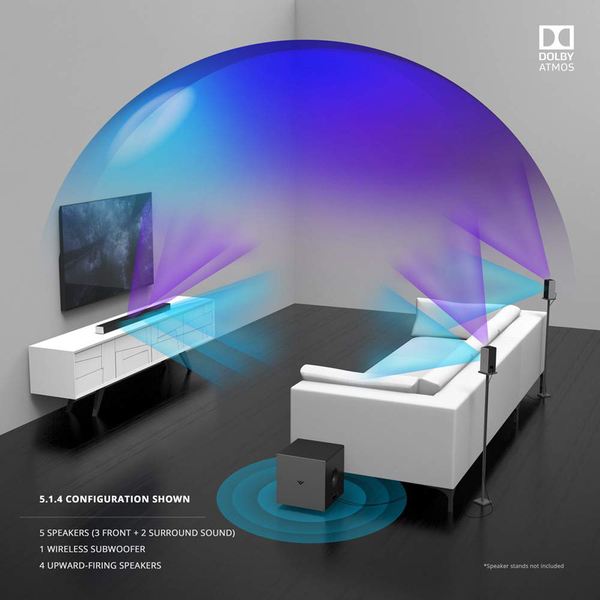
And beyond overhead effects, the soundbar and its separate satellites simply did a great job of creating an impressive surround sound experience for a system of this size. An elevator explosion in "The Matrix" was particularly enveloping, engulfing the room in a fiery rumble that seemed to come from all directions. The movie's famous bullet dodging scene came through with fantastic range, directionality, and imaging as well, naturally spreading effects to the left, right, front, and rear.
With that said, the relatively limited 36-inch width of the soundbar unit itself could lead to a slightly condensed sense of left and right directionality throughout the front soundstage compared to larger bars or true multi-speaker configurations.
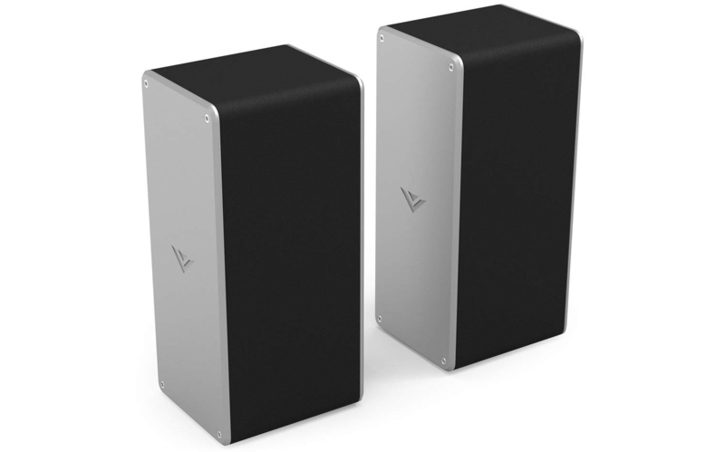
Overall bass output was generally solid during most movies, but the VIZIO SB36514 system's 6-inch subwoofer did lack the refinement and natural extension that larger, more expensive models typically produce. One of my go-to scenes for testing bass performance comes during the third act of "Inception" on Blu-ray. After a shootout leads to a car slowly falling off of a bridge in one dream and an avalanche in another, the track lets out a rather hefty low frequency effect. I've found this particular audio cue to be a bit challenging for a lot of smaller subwoofers, causing issues with cabinet rattle and distortion.
Though the 6-inch sub was thankfully free from any notable rattling during this sequence, bass did come through a bit overpowered with an unbalanced and boomy quality. Adjusting the subwoofer's volume down four of five levels did help to alleviate this overly aggressive quality, but at the expense of losing some of the track's oomph. This seemed to be a bit of a recurring issue for a few other action movie mixes, making it a little hard to find the right balance between the subwoofer's bass output and the rest of the system. For comparisons sake, I've found that the larger 10-inch subwoofer included with VIZIO's 46-inch Soundbar model does a better job of creating powerful, cohesive, and balanced Low Frequency Effects (LFE).
When it comes to non-native Atmos mixes, the soundbar system also did a solid job up-mixing audio to 5.1.4 when using the Movie Mode. Overhead effects were never as natural or nuanced compared to actual Atmos titles, but this is a nice feature to have for users who want to take advantage of all the system's channels when watching any content.
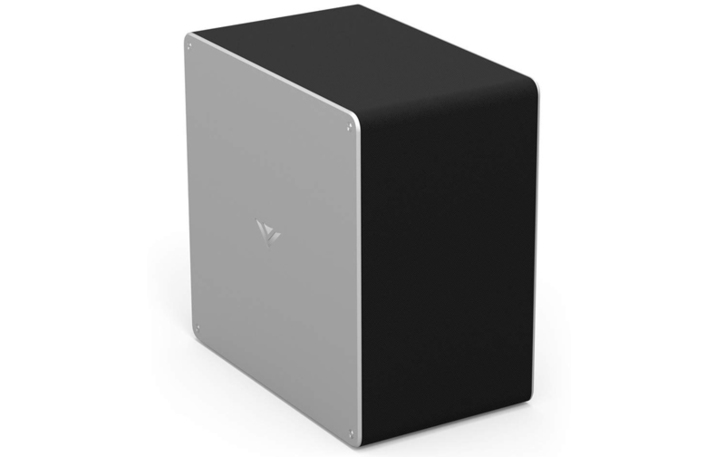
Finally, the SB36514 also held its own fairly well during wireless music playback, though overall music performance was definitely less engaging than movie playback. MP3 files and Spotify streaming tracks from artists like Radiohead, Ariana Grande, Daft Punk, Nirvana, Pink Floyd, Billie Eilish, and Gnarls Barkley, all came through with solid separation and fidelity.
With that said, native stereo playback could sound a bit constrained and a little bright, lacking the full range and layered detail that larger soundbars and component systems are capable of. Though I typically like to listen to music in its original 2-channel format, I actually ended up preferring the SB36514's Music Mode with 5.1.4 upmixing.
The resulting sound benefits from a fuller and wider presence that plays more to the device's surround sound strengths. While less accurate and not suited for audiophile music purists, the expanded soundfield should please most casual listeners. Those looking for critical 2-channel music playback performance, however, will have to invest in a more expensive system.
Turn-Ons
Turn-Offs
Final Thoughts
Balancing convenience, performance, and value, VIZIO's Dolby Atmos soundbar systems continue to impress me. More than just a space and budget saving alternative to a multi-speaker and AV receiver combo, the SB36514-G6 is simply a great entry-level 5.1.4 Dolby Atmos package.
While I did run into some issues with the SmartCast app, and the 6-inch subwoofer isn't quite as cohesive or balanced as I'd like, the soundbar's overall immersive audio performance is very strong for its $699 price tag. Users who need a bit more oomph for a larger home theater room or customers who want DTS:X support will have to look elsewhere -- but for buyers who want a simple 5.1.4 Dolby Atmos audio solution perfect for an apartment or a smaller living room, the SB36514-G6 comes highly recommended.
Related:
| Overall | |
|---|---|
| Value | |
| Performance | |
| Features/Ergonomics |